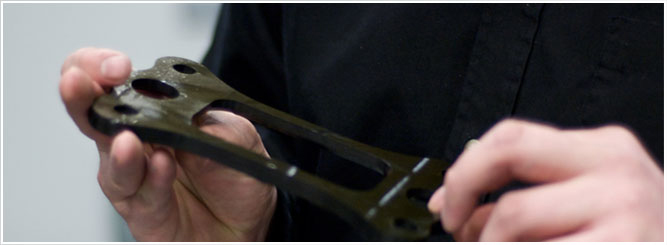
Abrasive Water Jet Cutting Machine: The Ultimate Guide to Cold, Precise Cutting
In the world of industrial manufacturing and fabrication, the quest for a cutting method that combines immense power with delicate precision is never-ending. Among lasers, plasma cutters, and traditional blades, one technology stands out for its unique versatility and fundamental principle: the abrasive water jet cutting machine. This remarkable tool harnesses the simple force of water and transforms it into one of the most powerful and flexible cutting instruments available. But what exactly is it, how does it work, and why should you consider it for your projects? This article delves deep into the world of abrasive waterjet cutting, exploring its mechanics, advantages, applications, and considerations.
How an Abrasive Water Jet Cutting Machine Actually Works
At its core, an abrasive water jet cutting machine operates on a deceptively simple principle: using ultra-high-pressure water mixed with a hard abrasive material to erode a narrow line through a workpiece. The process can be broken down into a few key stages:
Pressurization: A powerful intensifier pump takes in ordinary tap water and pressurizes it to extreme levels, typically between 60,000 and 90,000 PSI (4,000 to 6,200 bar). This high-pressure water is then delivered through high-pressure tubing to the cutting head.
Focusing the Stream: The high-pressure water travels through a small orifice, usually made of sapphire or diamond, located in the jewel nozzle. This orifice focuses the water into a coherent, supersonic stream.
Abrasive Introduction: In a mixing tube located just below the jewel nozzle, the high-speed water stream creates a powerful vacuum that draws abrasive grit (typically garnet) from an abrasive hopper. The abrasive particles are entrained into the water stream.
The Cutting Action: The mixture of ultra-high-pressure water and abrasive particles is forced through a narrow mixing tube (also called a focus tube). Here, the water accelerates the abrasive particles, transforming the stream into a potent erosive force. This stream exits the nozzle at speeds up to three times the speed of sound, mechanically eroding the material along a very narrow kerf.
This combination of water and abrasive is what allows this tool to cut through incredibly hard materials that pure water jets cannot, such as metals, stone, and ceramics.
The Unmatched Advantages of Using a Waterjet Cutter
The unique working principle of an abrasive water jet cutting machine grants it a set of advantages that are difficult to match with other thermal or mechanical cutting methods.
Cold Cutting Process: Unlike laser or plasma cutting, which use intense heat to melt material, waterjet cutting is a cold process. This eliminates the Heat-Affected Zone (HAZ), meaning the material properties around the cut edge remain unchanged. There is no hardening, warping, or residual thermal stress, which is critical for metals that are heat-sensitive.
Material Versatility: This is arguably its greatest strength. An abrasive water jet cutting machine can cut virtually any material. From soft, delicate materials like foam, rubber, and food products to super-hard alloys like titanium, tool steel, and inconel, and everything in between (glass, granite, composites, plastics), the same machine can handle it all. There are no hazardous fumes produced when cutting materials like lead or asbestos-containing composites.
High Precision and Flexibility: Waterjets are CNC-controlled, allowing for extremely precise cuts with tight tolerances. They can produce intricate shapes, sharp corners, and beveled edges with ease. The flexibility to quickly switch from cutting a complex pattern in sheet metal to cutting stone tiles without changing tools is a significant operational benefit.
Minimal Material Waste: The kerf (width of the cut) of a waterjet stream is very small, typically around 0.02″ to 0.05″ (0.5mm to 1.3mm). This narrow cut path allows for efficient nesting of parts, minimizing material waste and saving on costs, especially when working with expensive materials.
Where is the Abrasive Water Jet Cutting Machine Used?
The application range for this technology is vast, spanning dozens of industries. Any sector that requires precise, versatile cutting leverages the power of the abrasive water jet cutting machine.
Aerospace and Aviation: Used for cutting heat-sensitive materials like titanium, aluminum, and carbon-fiber composites for airframes, engine components, and interior panels without compromising their structural integrity.
Architecture and Art: Perfect for creating intricate designs, inlays, and patterns in stone, glass, and metal for countertops, decorative wall panels, and sculptures. Artists value it for its ability to translate complex digital designs into physical materials.
Automotive Industry: Employed for prototyping, cutting gaskets, interior trim, body panels, and composite materials. Its ability to cut multiple layers of material simultaneously is highly valued for efficiency.
Manufacturing and Machine Shops: A workhorse for general fabrication, tool and die making, and creating parts from a huge variety of materials. It is often used as a complementary technology alongside milling machines and lasers.
Mining and Defense: Used for cutting hardened armor plate, explosives, and other specialized materials where heat from traditional methods could be catastrophic.
Key Components of a Modern Waterjet System
Understanding the main parts of an abrasive water jet cutting machine helps in appreciating its complexity and maintenance needs.
Intensifier Pump: The heart of the system. It uses hydraulic power to pressurize the water. Modern pumps are incredibly reliable and can deliver constant pressure for thousands of hours.
CNC Controller & Software: The brain of the operation. It translates CAD drawings (e.g., DXF files) into machine movement commands (G-code), controlling the motion of the cutting head on the X and Y axes with high accuracy.
Cutting Table: The surface on which the material is placed. It is typically a submerged slat table, where the water and spent abrasive are collected in a tank below, reducing noise and splash.
Cutting Head: This includes the high-pressure plumbing, the jewel nozzle (orifice), the abrasive mixing chamber, and the focus tube (mixing tube). These are consumable parts that require regular inspection and replacement.
Abrasive Delivery System: This consists of the abrasive hopper, which holds the garnet, and a metering device that controls the flow of abrasive into the cutting head.
Factors to Consider When Investing in Waterjet Technology
While powerful, acquiring an abrasive water jet cutting machine is a significant investment. Several factors should be weighed:
Initial Cost vs. Operational Cost: The upfront cost of the machine and installation is substantial. However, operational costs are dominated by abrasive garnet (which is consumed continuously) and electricity to run the high-pressure pump. Maintenance of consumable parts (orifices, mixing tubes) also adds to the ongoing expense.
Cutting Speed: While exceptionally versatile, waterjets are generally not the fastest cutting method for thin materials compared to plasma or lasers. However, for thick materials (over 2 inches), they often become competitive or even faster. Speed is also a factor of the material’s hardness and the desired cut quality.
Maintenance and Expertise: Operating and maintaining a high-pressure system requires trained personnel. Understanding how to maintain the pump, diagnose pressure issues, and change consumables correctly is crucial for uptime and cut quality.
Taper and Cut Quality: A inherent characteristic of waterjet cutting is that the jet widens slightly as it travels through the material, creating a minor taper on the cut edge. For most applications, this is negligible. However, for high-precision parts, this taper can be compensated for through advanced software or by using dynamic cutting heads that tilt to create a perfectly square edge.
In conclusion, the abrasive water jet cutting machine is a uniquely powerful and flexible manufacturing tool. Its ability to cut virtually any material without heat-affected zones, with high precision and minimal waste, makes it an indispensable asset across countless industries. While the investment and operational costs are considerations, the unparalleled versatility and quality it offers make it a technology that continues to shape the future of fabrication and design. Whether you’re crafting intricate art or building industrial machinery, it provides a cutting solution that is as precise as it is powerful.
continue reading
Related Posts
- 1371 words6.9 min read
- 1449 words7.3 min read



